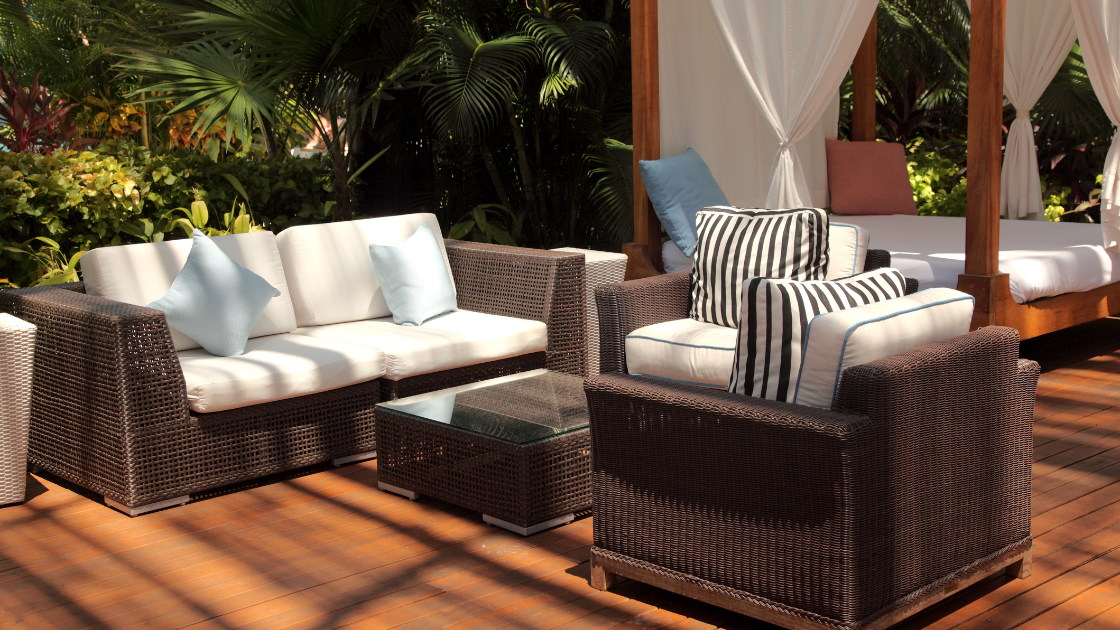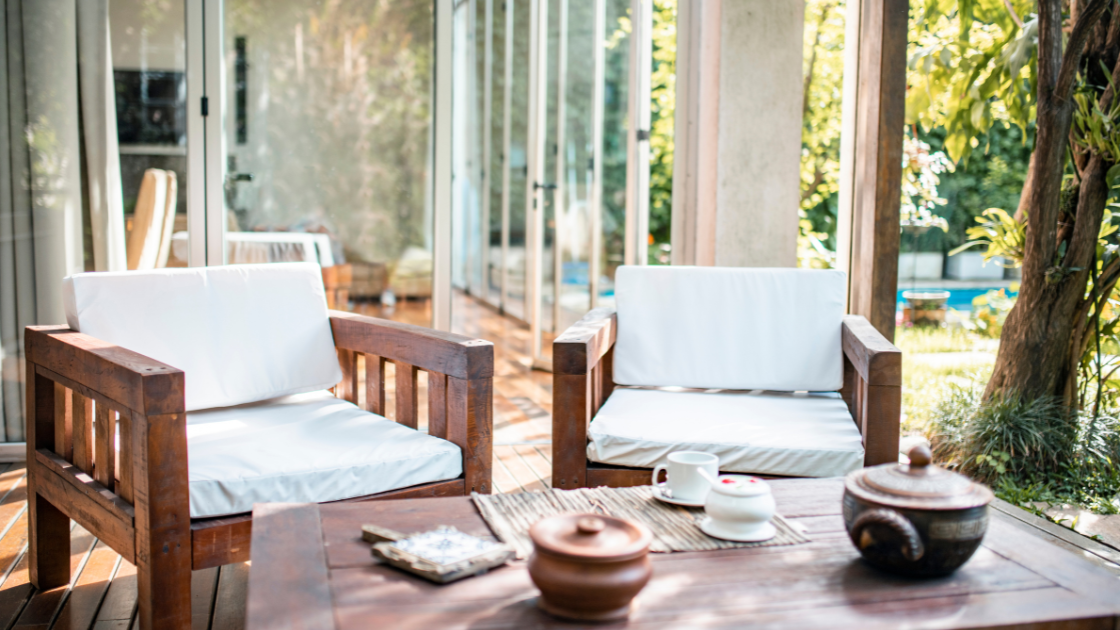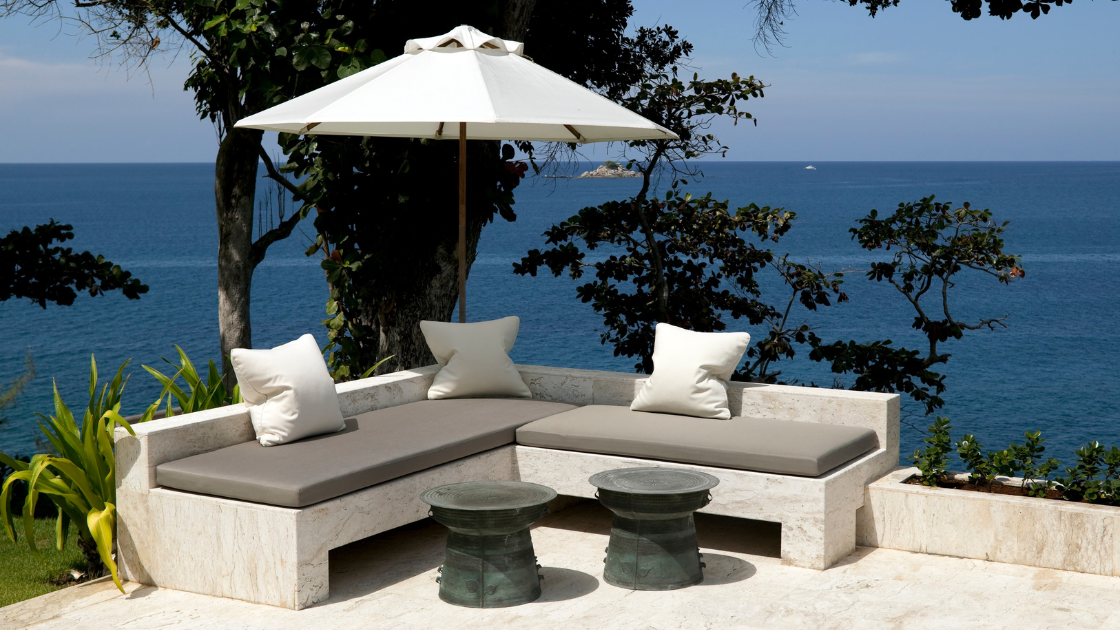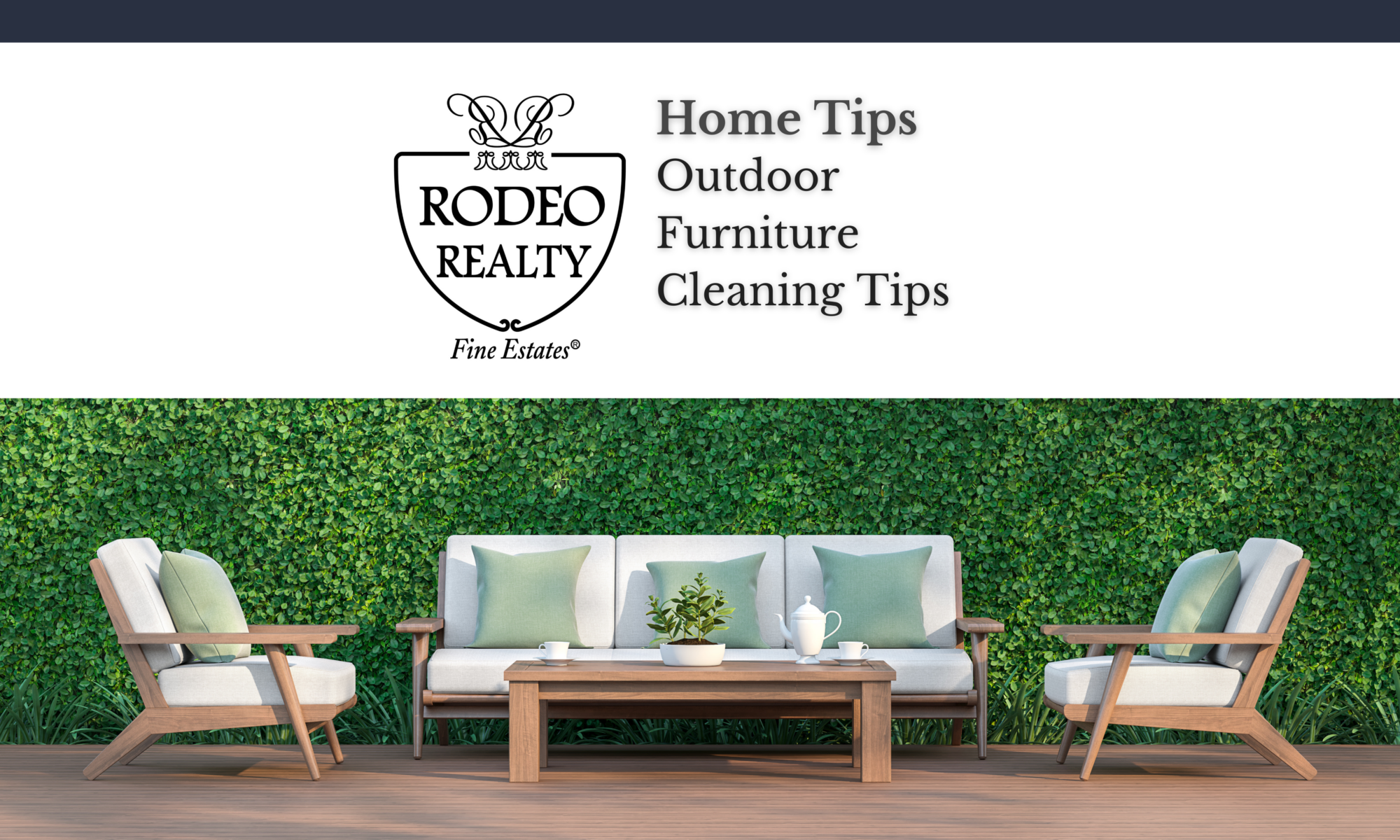Outdoor furniture maintenance is essential, especially with the ever-changing weather in LA. Your outdoor aesthetic is constantly exposed to the elements, so how do you keep your furniture clean and ready for any time of the year? With helpful outdoor furniture cleaning tips! Read on below for simple advice you can use to maintain your home‘s exterior lounge.
Set a Cleaning Routine for Your Outdoor Furniture
Start with sweeping as a general practice for keeping your outdoor furniture area clean. It is important to clear off surfaces when needed by using a soft-bristle brush and water. Afterward, you can wash the surface using mild soap mixed with a gallon of water and a soft spine. From there, you can use a lint-free cloth to pat the surface dry.
Tips for Deep Cleaning Every Type of Outdoor Furniture
Deep clean your patio furniture at least twice a year: once in the spring before you start using it regularly as temperatures rise, and again in the fall before you put it all away for the winter.

Wicker Furniture
This pliable weave used to make furniture is traditionally constructed from rattan, split reed, or coated paper and is sometimes reinforced with metal. Coats of clear varnish, paint or a combination of the two are often applied to protect the surface. Sunlight is the primary enemy of wicker. Always cover wicker furniture if you intend to leave it outside for more than two or three weeks.
To remove dirt and debris, vacuum with a dust-brush attachment or use a dry paintbrush. Clean with a mild soap solution. Scrub, and rinse. Avoid using too much water, which can weaken the fibers. Dry as described.

Wood Furniture
Most lumbers used for outdoor furniture naturally resist decay and withstand the elements. Although sealants help preserve color and protect against wear and tear, they aren’t necessary. Left unfinished, the wood acquires a silvery-gray patina and requires little maintenance.
To remove stains or mildew, mix 1 gallon hot water with powdered oxygen bleach according to directions. Scrub the area with a soft-bristle brush, and rinse. To remove rust stains or bird droppings, or to restore the original color, sand lightly along the grain using fine-grit sandpaper, and rinse. If the area is too large to sand, mix hot water with oxalic acid crystals (also called wood bleach or wood brightener) according to directions. Apply with a soft-bristle brush, and rinse. Don’t use chlorine bleach, which can damage wood fibers.

Metal Furniture
Aluminum, iron, steel, and other metals can be wrought (heated and hammered into shape), cast from molds (often in solid pieces), or formed into hollow tubing. Because most of these, except aluminum, are subject to rust, metal furniture is usually finished with layers of clear varnish, paint, or a durable powder coating.
Use a mild soap solution, scrub, rinse, and dry as described. To remove rust stains or mold, sand the area lightly using fine-grit sandpaper. Wipe it clean, and apply touch-up paint if needed (available through the manufacturer) in several thin layers. Let dry between coats. Humidity may affect the paint, so it’s best to work on a dry day.

Fabric-Covered Furniture
Material for outdoor use often called performance fabric, is designed to resist sun damage, stains, moisture, and mildew. Solution-dyed fabric, woven with pigment-infused fibers, is less prone to fading and can handle more aggressive cleansers than printed or piece-dyed cloth. To determine which you have, check both sides of the fabric.
Machine wash your removable covers in cold water using mild, bleach-free laundry soap and then air-dried. To hand wash, submerge the fabric in a solution of 1/4 cup of gentle liquid soap, such as Ivory, and 1 gallon of lukewarm water (do not exceed 100 degrees), swishing gently. Rinse and air-dry.
To clean mold from solution-dyed fabrics, mix 1 gallon of warm water with 2 tablespoons of oxygen bleach if the care guide lists it as an approved cleaning agent. Wet the affected area, and scrub with a soft-bristle brush. Rinse and air-dry.

Plastic Furniture
Resin or all-weather furniture is generally made from plastic, either polyvinyl chloride (PVC) or polyethylene (PE). These plastics are manufactured with a number of chemical additives, including ultraviolet stabilizers and fungicides, and can be shaped to mimic wood, wicker, and items such as woven chair straps and slings.
Use a mild soap solution, scrub, rinse, and dry as described. For tough stains or mildew, try a solution of 10 parts water to 1 part chlorine bleach if the care guide lists bleach as an approved cleaning agent.
